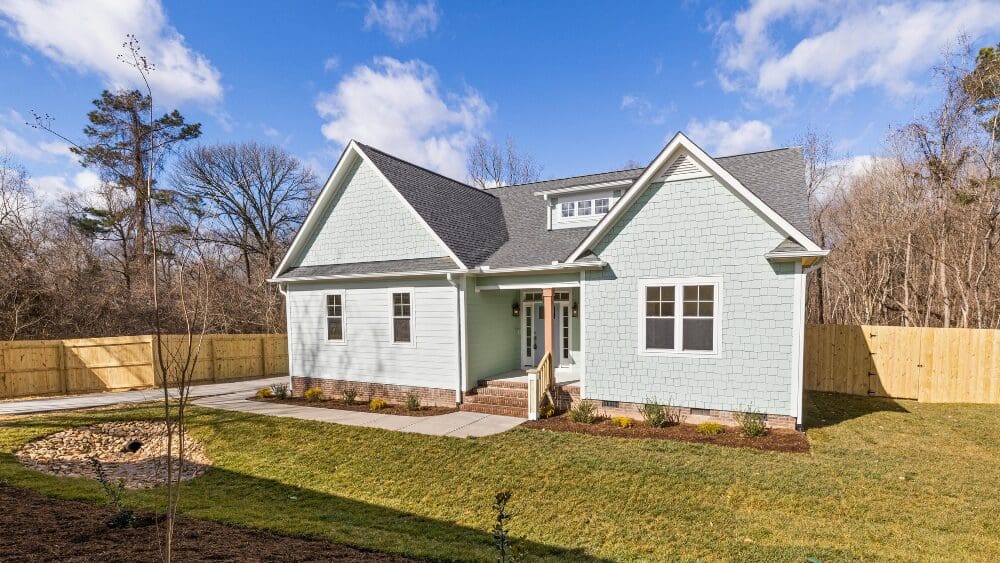
It’s the year 2005. You own a house, and you’d like to know what seems like a simple fact: how much is it worth? You soon come to discover, though, that your property’s value will be an elusive — not to mention expensive! — number to track down in any shape or form. You’ll have to call up an appraiser for their professional opinion and be prepared to write a fairly large check. We’re talking about at least several hundred dollars to cover the appraiser’s onsite visit, comps analysis, and compilation of findings into an official report. Fast-forward to 2020. You still own that house and you’re wondering, has it appreciated over the years? To find out, you pop your address into an online price-check tool faster than you can place an Amazon order. Out comes an instant home value estimate that’s totally, 100% free. What a contrast! But let’s back up a minute. Like much of the technology we rely on today, the fast and free home appraisal has its strengths and limitations. And there’s a lot you need to know about the digital-age home appraisal tools before you try to use one for a task as serious as, say, pricing your home. In this post we’ll cover: “Say ‘goodbye’ to appraisers — and possibly real estate agents,” reads a CNN Money article published Feb. 8, 2006. It was a momentous announcement for real estate technology: the launch of Zillow and the Zestimate, which the article dubbed a “free tool that guesses how much any given house is worth.” Several years and algorithm updates later, Zillow reports that it publishes home valuations for 97.5 million properties. But it hasn’t had quite the impact that CNN Money projected all those years ago. Despite the dissemination of property data and advancement of mathematical modeling to calculate home value instantly based on data, licensed (re: human) appraisers are still an integral part of the housing industry. You generally can’t get a mortgage or refinance your home without a professional appraisal first, and real estate agents still facilitate 89% of home sales. However, the home appraisal landscape has certainly shifted in a fundamental way with the rise of what are now known generally as automated valuation models (AVMs). And the algorithmic programs that drive instant value estimators will only gain in accuracy as time goes on and the technology improves. The fact remains, though, that home value is a tricky little thing to calculate. There are so many variables to consider, from your home’s unique characteristics to the changing nature of the real estate market, that if a valuation doesn’t take into account your new flooring, room addition, or unrecorded defects, it can be skewed high or low. As of 2020, Zillow has a self-reported nationwide median error rate of 7.5% for off-market homes. Home value is also a number you want to get wrong. A house is typically your largest asset and any kind of decisions you make around it will inevitably be high stakes. In fact, our research shows that the no. 1 mistake people make when selling their home is overpricing. Underpricing is risky, too — because it could mean that you leave precious dollars on the table. Many online real estate sites provide free home valuations — including HomeLight. Each one arrives at their valuations using their own formula. Generally speaking, though, AVMS use some combination of the following data, in addition to proprietary software, to determine the value of a property: Joshua Cooley, a top-selling real estate agent who’s seen online valuation tools grow to become a standard first step for home sellers in his dozen years in the business, shares his perspective on the tools: “[Online home appraisal tools] set the initial benchmark,” says Cooley. “But these tools don’t walk through your home. They don’t engage with the five senses.” Here’s how an appraiser’s process will differ from an online estimate: An AVM will use publicly available records from places like the county auditor’s office to gather a property’s gross living area, but these figures can be out of date, or even inaccurate, explains Jamie Owen, a Northeastern Ohio appraiser with over two decades of experience in the field. Appraisers instead will physically measure the interior and exterior of the home to make sure the public records are accurate. “Gross living area is probably the number one factor for the value of that land,” Owen explains, “but pulling it off of the public record can be flawed.” “AVMs can be weak in specific areas,” says Owen. For example, a neighborhood under a certain ZIP code might be split into two different school districts, a major value differentiator. An appraiser with that local knowledge would know to pull comps from homes only within that same school district, while an AVM might mix comps from the two districts, resulting in a skewed valuation for your property. In addition, an AVM might struggle to calculate the value of a property with little to no available comps in sparse or rural areas. In that case, an appraiser would probably have better success using an alternative method of calculating value, such as the cost approach or income approach, or through firsthand and personal knowledge of the locale. An AVM must work with the data and information it has to calculate a home’s value. These tools will not know that you completely renovated the second-floor bathroom unless you input those details. An appraiser has the advantage of taking a home’s real-time condition into account with an onsite visit of the property. AVMs have respectable precision when it comes to determining the value of homes in a development or condominium complex, says Owen, because they are all relatively the same. However, if your home is unique or different in some way from the rest on the block, online estimation tools may not value it with as much accuracy. Sellers will see this especially when it comes to lakefront properties or homes with a view, where precise location makes a big difference in appeal and value. Where AVMs lose in accuracy points, however, they gain in speed — they’re able to comb through millions of pieces of data almost instantly to estimate a home’s value, making it a fast and easy starting point for many home sellers, says Owen. However, you won’t always understand where the estimate comes from; “a good appraiser can tell you where they obtained their data, and how they developed every aspect of the appraisal,” Owen says, “You can’t ask a computer that.” By now you have a good overview of how AVMs work, and what the pros (speed and cost) and cons (risks of inaccuracies) are to using them. What’s nice about HomeLight’s Home Value Estimate tool is that we pair housing market data with your own personal insights about your house. We figure since you’re the one living there, you probably know things about your home that the internet does not! So, before we run any numbers, we’ll actually ask you 7 simple questions about the little things that make your home different. We then combine your answers with data from multiple trusted sources to come up with a real-world valuation. Using this method, we can predict your home’s current value with far greater accuracy.The history of the free home appraisal
How AVMs work
How online home appraisals differ from an appraiser’s opinion
Square footage: Data vs. measurement
Location spottiness
Condition
Value of unique features
Our free home appraisal tool — and why it’s different



